So much has happened since the last update, for SANGO-Kenya and in the world. There were so many activities in the field – land preparation, distribution of seeds, planting.
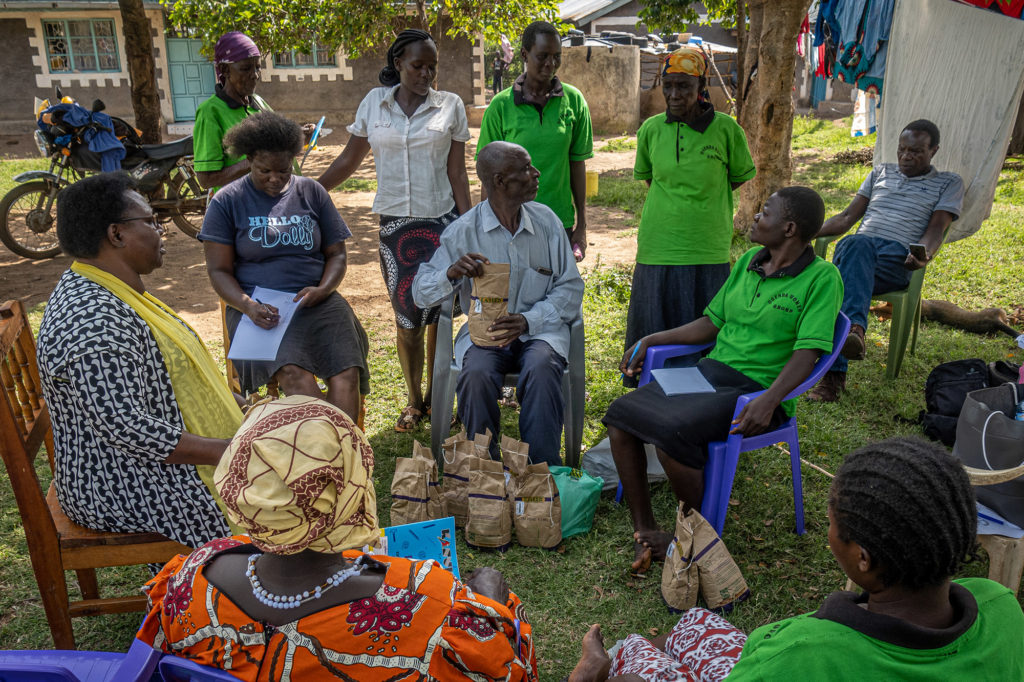
Added to that, in the past two weeks, world events took over. I first started writing this chapter of the SANGO Diaries, I had begun thinking I might return to the U.S. a little early because of coronavirus, or Covid-19. Within a couple of days, I decided I needed to get home as soon as possible as flights were being canceled and cases were just starting to be found in Kenya. I left a week early, meaning that I had to put the transition plan in place in two days, not 10 (and didn’t have time to finish this chapter).
I have now been home a week, but I am in constant contact with our team there. Dominick (our primary agriculture trainer and advisor), Benter (our gender, agriculture, and home economics advisor), Fredrick (our nutrition advisor), and Helma (our new coordinator), along with the Lead Farmers and the farmers themselves are ensuring that the program continues to thrive.
However, things are changing fast there as well. The day I left, the schools were closed. And just today I heard that all non-essential workers were being ordered to stay home. Our colleagues from the Ministries of Agriculture and Health are not yet included, but that could change. So we are putting yet another plan in place – one that will take advantage of cellular technology to keep us connected.
I believe that SANGO-Kenya and its activities are more important than ever – our focus on growing more sustainable and nutritious crops will be even more important to the communities in which we work.
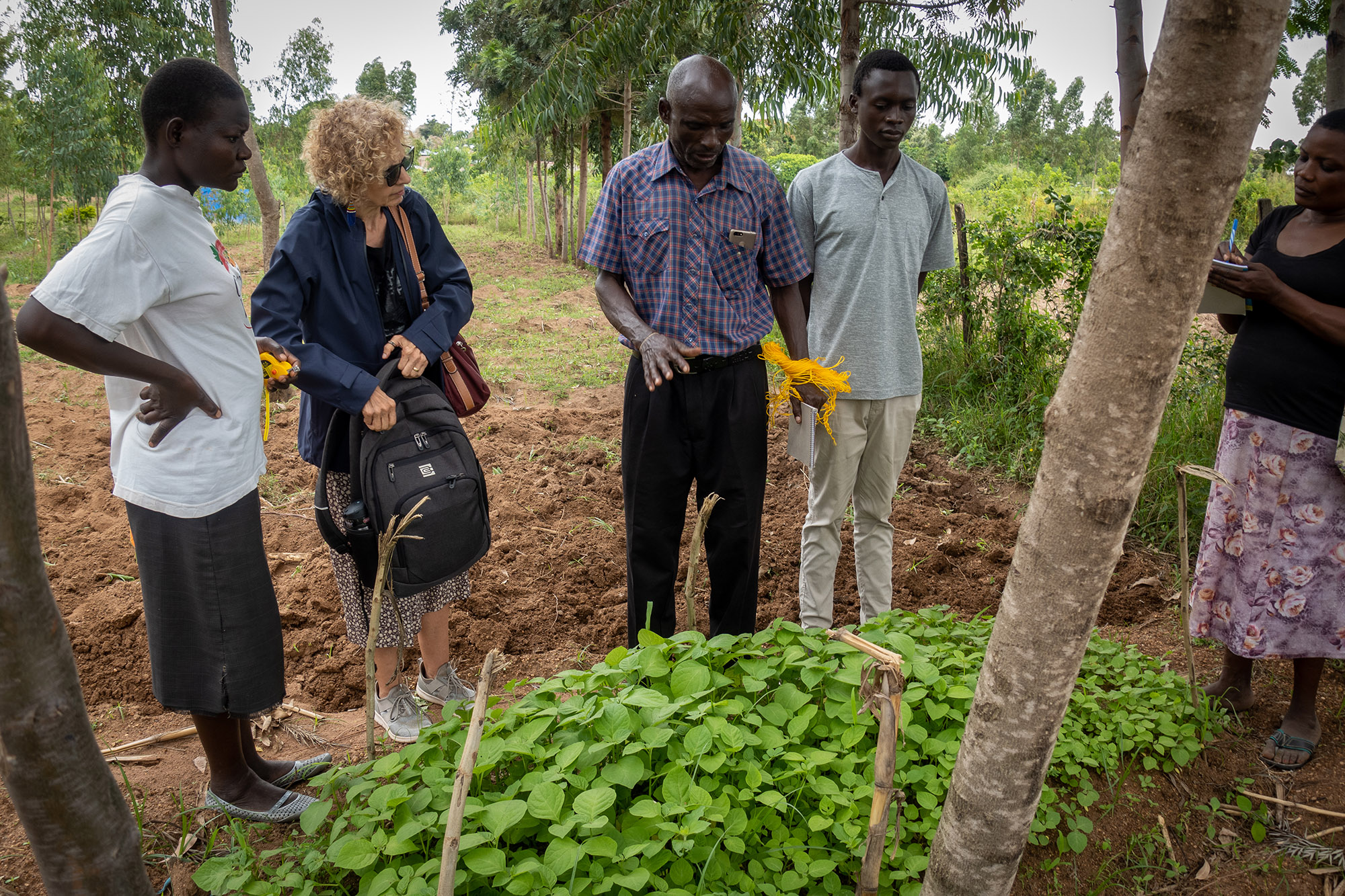
Proper planting, including use of manure, along with adequate rains helped the African Nighshade seedlings grow so they were ready for transplanting to the main field. Dominick went around to each farm, inspecting the African Nightshade plants and explaining next steps.
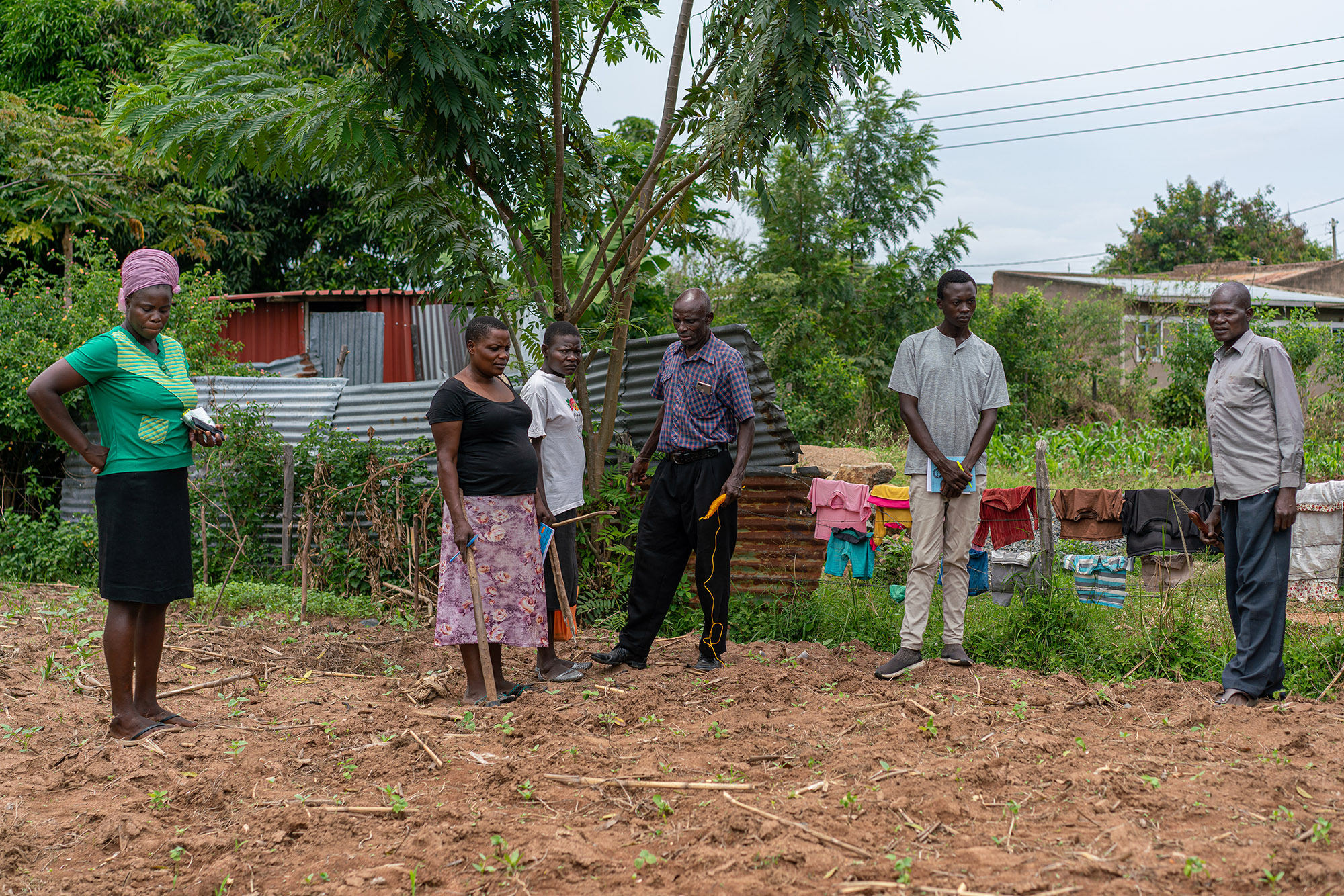
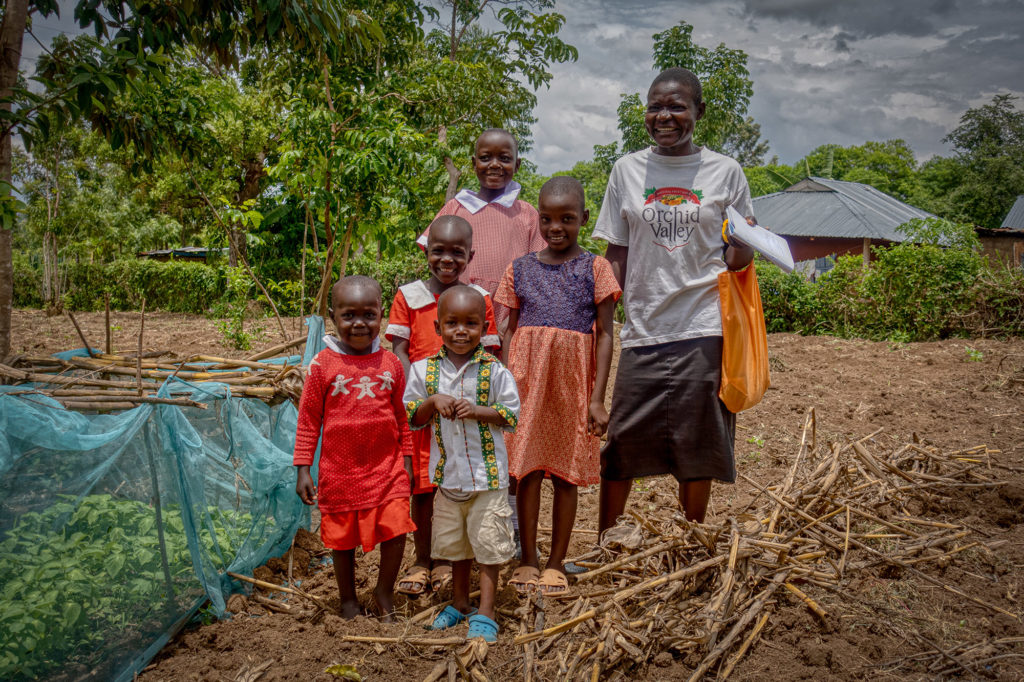
Fortunately, by the time things started changing, we had already completed much of the training and the planting. Dominick continued to oversee the maturing of the African Nightshade nurseries and the preparation of the rest of the farms. The week before I left (two weeks ago), the “long” rains came, seeds were distributed, and planting began.
The first crop the farmers planted was African Nightshade. The seeds were planted a few weeks ago — before everything else — in “nurseries” so the plants could germinate before transplanting. The farmers use what is at hand to make the nurseries: sticks covered with netting provide a protective fence; dried materials are placed on top of the soil to serve as mulch. The farmers then watered their plots every morning and evening, and in a few weeks, the seeds germinated and were ready for planting. It was incredibly exciting for everyone – the farmers, our team – to see the first plants grow.
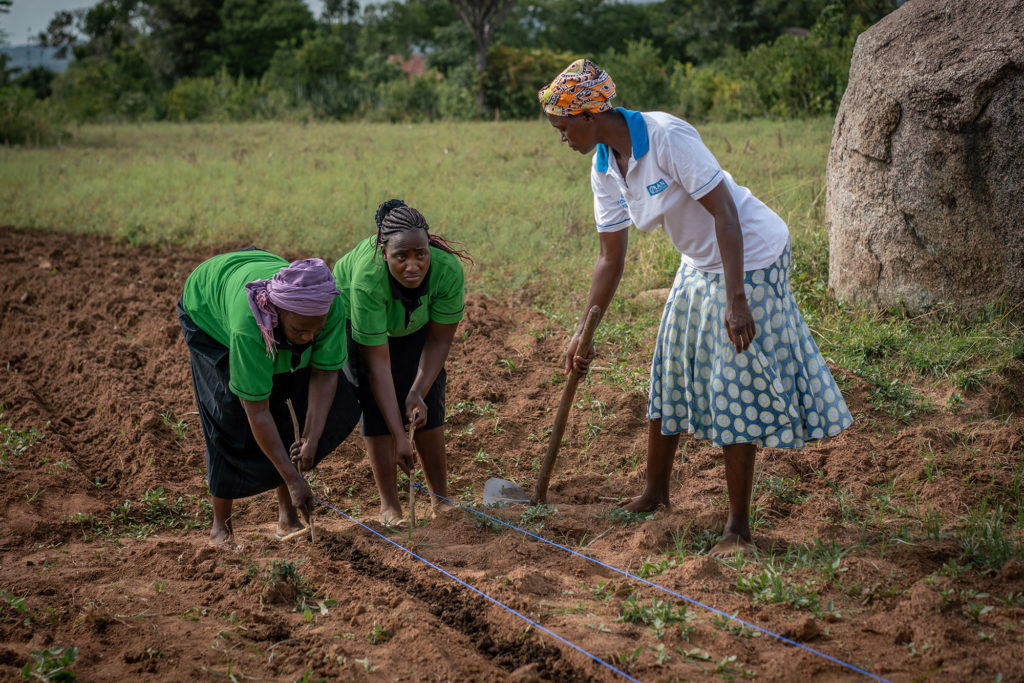
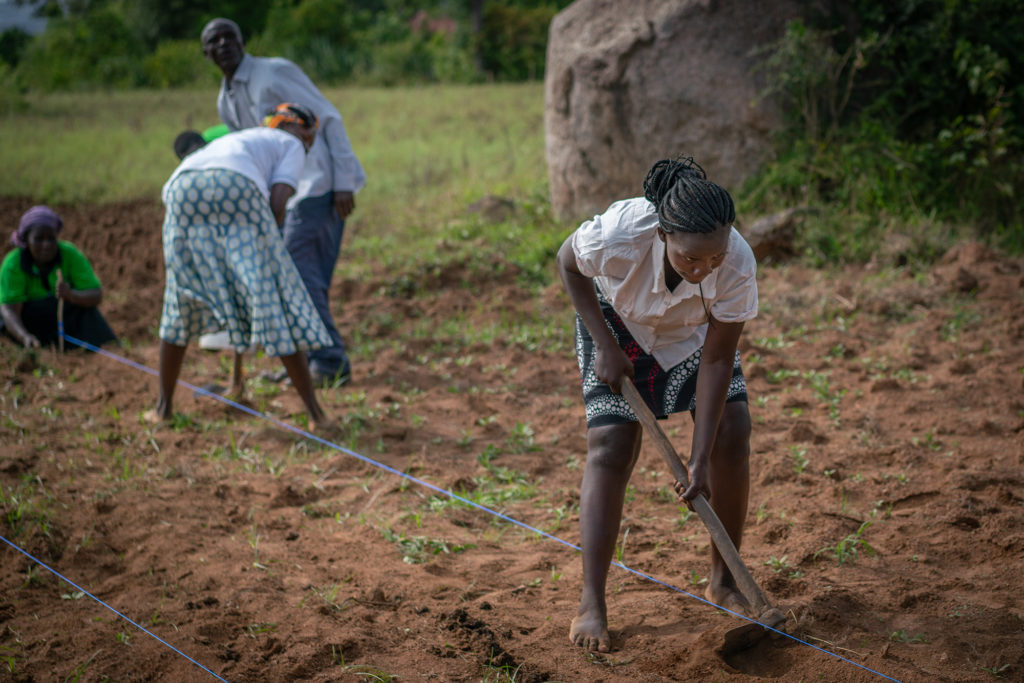
Planting of the rest of the crops – cowpeas, jute mallow, amaranth, and spider leaves – had to wait until the long rains really began. The Ministry of Agriculture recommends that you wait until it has rained at least three days in a row before planting. We had many false starts: it would rain really hard, sometimes flooding, then it would stop, get really hot, and the land would dry up and get hard.
Though the farmers were very anxious to plant, Dominick emphasized that if you plant before the rains are continuous, not sporadic, the seeds will sprout and begin to grow, but they will not be able to mature. He has a great relationship with the farmers, and despite their wanting to get the seeds and plant sooner rather than later, they waited more or less patiently.
Finally, we had three days of continuous rain. We had a plan in place, and as soon as we saw the rains were continuous, we put it into place. We met with all the farmers, Dominick reviewed the procedures he had taught in the agriculture training, followed by a demonstration at the demonstration plot (donated by one of the farmers) of how to plant and space the seeds. All the farmers participated, putting into practice what they had learned. It was very impressive to see how the women worked together – sharing the work, each one taking on different tasks, and helping each other.
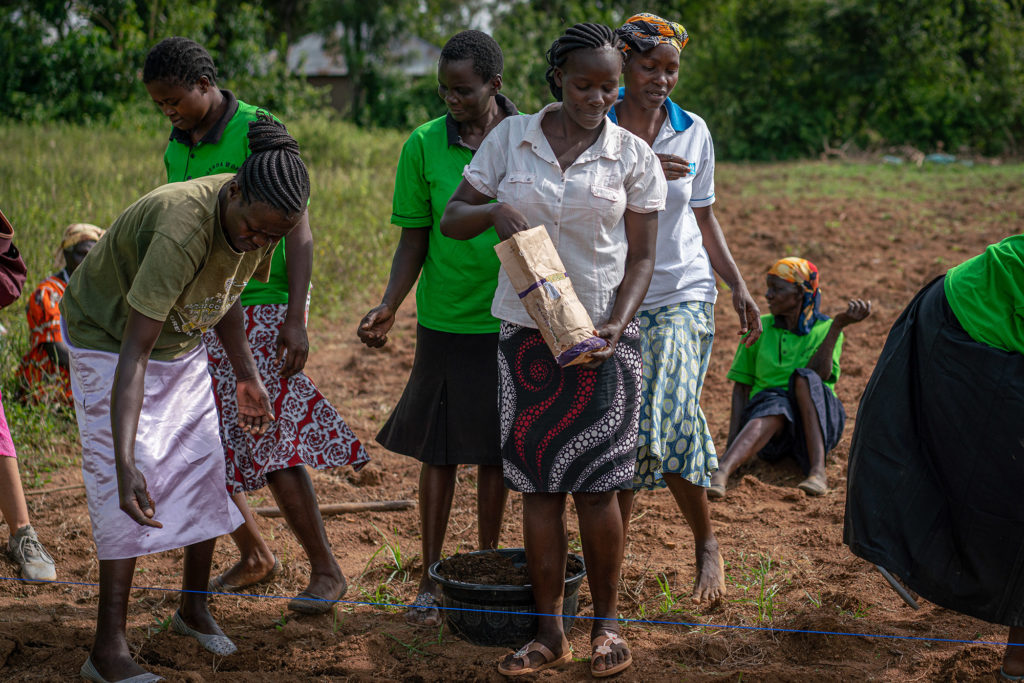

Note:
A good friend and photographer, Etan Rozin, joined the project for what turned out to be the last week I was there, volunteering his services to take photographs. His trip, too, was cut short because of coronavirus. He is currently in quarantine at home in Israel, but he spent three days in the field and the photographs here and on the website are thanks to him.
To see more of Etan’s photographs, please go to Rozinphotos.com

So impressive, Kitt! I have shared w/ my writer friend/buddy in Nairobi, who has just had his first book published three days ago, and whom I met at the Iceland Writers Retreat in 2017. He is so talented! And so are you. I’m glad you’re back home!
Thanks, Diane!